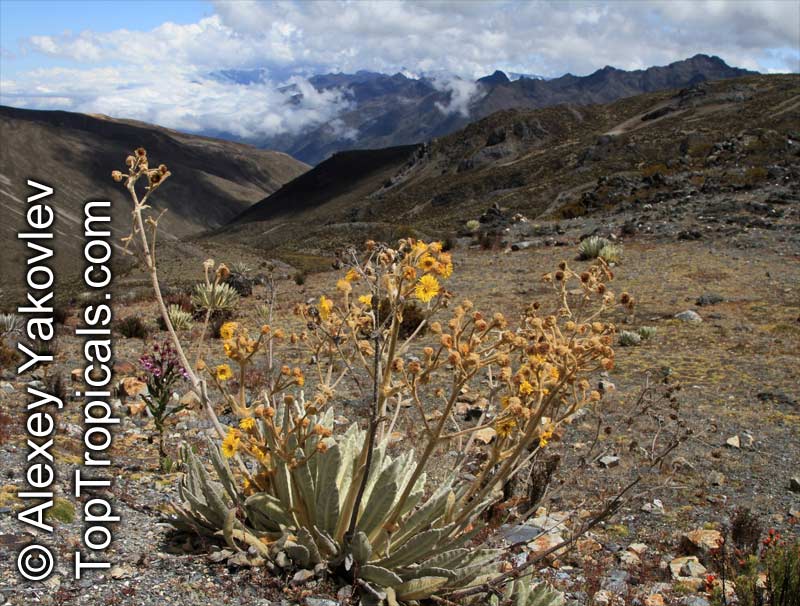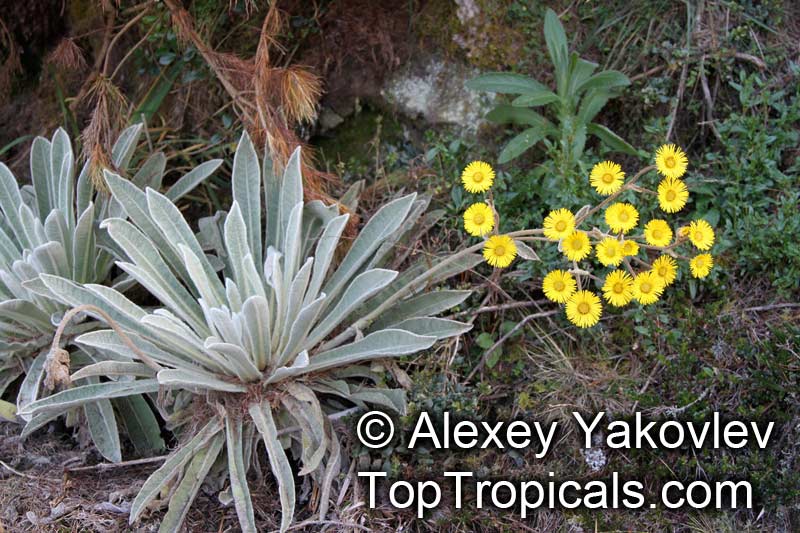Espeletia schultzii (Frailejon)
Top Tropicals Plant Encyclopedia
Botanical name: Espeletia schultzii
Common name: Frailejon
Family: Asteraceae
Origin: South America, Andes







Espeletia schultzii is an endemic plant of the high Paramo region of Venezuela and Colombia, where it grows as a large shrub, able to reach heights of 5 to 10 feet. It has toothed leaves, a perennial nature, and its stem is distinguished by the presence of furrowed bark. Clusters of yellow and orange blossoms bloom upon it throughout the year, making it an attractive ornamental foliage.
Beyond its aesthetic appeal, Espeletia schultzii also enjoys a long history of multi-faceted ethnomedical uses. People in the area have long utilized the roots and leaves of this plant to treat fevers, headaches, and a variety of other ailments.
When it comes to cultivating Espeletia schultzii, the best results are achieved when the shrub is exposed to full sun. Nevertheless, it's also possible to grow it in shady areas. Moderate watering should be provided as the plant is a xerophyte and can not handle excessive moisture.
During the cold months of the year, it should be protected from cold as the blooming would stop. In these conditions, it's best kept in containers with adequate drainage and good quality potting soil. If the container is positioned outside, it should be protected from the wind. With sufficient care, the Trailing African Daisy can remain an attractive and long-lasting part of any garden all year round.


